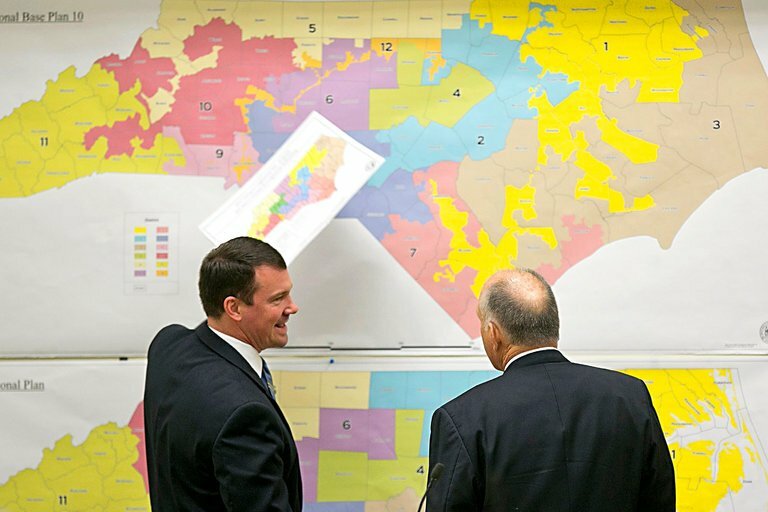The John Locke Foundation’s Jim Stirling and Andy Jackson both spoke at a public hearing of the joint Senate Redistricting and Elections and House Redistricting committees on September 27 at the General Assembly’s Legislative Office Building. Their prepared statements are below.
Public Comment by Jim Stirling
While the criteria this committee adopted in 2021 is a good starting point, I would ask that the committee make minor adjustments to improve this process. The most important of these changes is to exclude the use of incumbent data and not splitting precincts for the purpose of preventing double-bunking. Districts should be drawn for the purpose of maintaining communities of interest while minimizing county traversals and the splitting of precincts.
For this reason, I also advocate the committee maintain its previous criteria and restrain itself from the use of political or racial data in the drawing of maps. While these maps should look to maintain Voting Rights Act compliance, focusing on this data is not necessary to do so. VRA compliance can be maintained by utilizing traditional redistricting practices. This is supported by the fact that none of the districts drawn by the General Assembly in 2021 were struck down for alleged noncompliance with the VRA.
I also advocate the committee maintain its previous criteria and restrain itself from the use of political or racial data in the drawing of maps. While these maps should look to maintain Voting Rights Act compliance, focusing on this data is not necessary to do so.
Jim Stirling
Which segways well into my final request regarding criteria. I ask that this committee adopt criteria to whenever possible maintain municipalities wholly within a district. While it is impossible to maintain every municipality in its entirety due to both the Stephenson decision, population requirements, and minimizing county traversals; this committee should attempt to maintain these communities of interest.
In a Locke Foundations study, we challenged 15 students to draw maps both Congressional and Senate maps using the criteria I advocate for today. Many were able to create maps minimizing county and precinct splits while maintaining the state’s 10 largest municipalities’ “core precincts” for the congressional districts and minimizing the splits in senate maps. We defined these “Core precincts” as precincts that were contiguous and were fully incorporated into a municipality. Utilizing this definition of core precincts, the Charlotte district was still able to be compliant with population limits and prevent having to cleave off a significant portion of the city.
Public Comment by Andy Jackson
The criteria adopted in 2021, including not using racial or partisan data, are perfectly fine. If strictly adhered to, using those criteria will produce congressional maps that accurately reflect the politics and political geography of North Carolina.
Legislators should also do a better job of adhering to the redistricting criteria you pick. For example, there is no need to have more than 13 county splits (not to say split counties) in North Carolina’s congressional map. The original map the General Assembly approved in 2021 had 14 county splits. There is also little need to split more than 13 precincts. The original congressional map passed in 2021 had 25 split precincts.
[T]he General Assembly should use the same criteria it used in 2021 but adhere to them more strictly.
Andy Jackson
And we certainly do not need, for example, to cleave apart large portions of Charlotte, which was done in both the remedial map passed by the General Assembly and the map drawn by court-appointed special masters ahead of the 2022 election.
We have a good idea of how a map drawn using politically neutral criteria would come out. Expert testimony by University of Michigan Political Science professor Jowei Chen found that the most likely outcome of a map drawn using politically neutral criteria is 9-5 Republican. A 7-7 map is unlikely unless you set that as your goal. A 10-4 map is also unlikely. Other studies and our own research came to the same conclusion.
In summary, the General Assembly should use the same criteria it used in 2021 but adhere to them more strictly.


